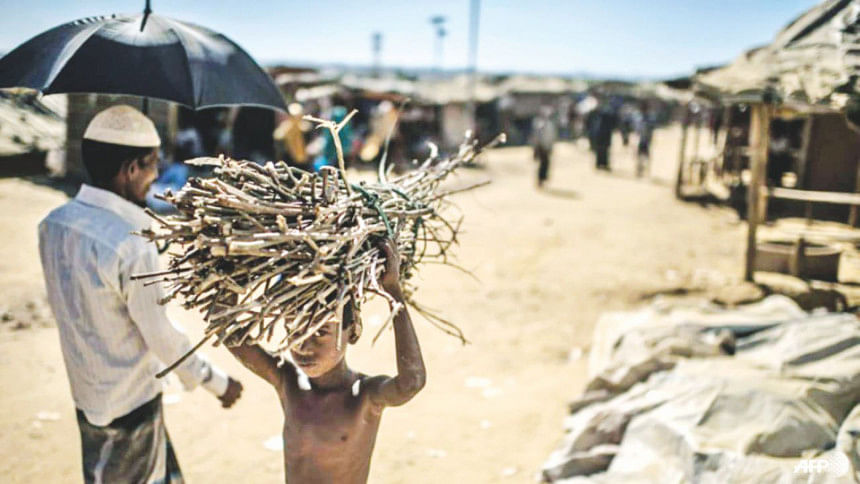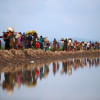Environmental challenges that can't be ignored

It is now well over a year since nearly 700,000 Rohingyas were forced out of Myanmar and Bangladesh opened its borders to them and gave them shelter in the Cox's Bazar region. The immediate emergency period is coming to an end and the government of Bangladesh as well as all the international and national agencies involved in providing humanitarian assistance need to start thinking about longer term aspects of the problems of the ecosystems and people (both the locals and the Rohingyas) living next to each other.
The issue is a very complex one and has no easy solutions as every potential solution has its own drawbacks. Nevertheless, an effort to take us forward is essential.
The first point is that even though the Rohingyas are not climate migrants, their camps and the surrounding ecosystems have become one of the most climate-vulnerable parts of the country. Hence the future climate change adaptation strategies for Bangladesh need to have a strategy for the Cox's Bazar region, including the Rohingya camps and their surrounding areas and populations. This region has now emerged as one of the country's major climate-vulnerable "hotspots".
The second point is the need to focus on the loss of forests and biodiversity associated with providing space for Rohingya camps and firewood collection by the refugees. Even though the Rohingyas are now being provided with liquefied petroleum gas (LPG) canisters for cooking, this is not without its own problems (including its high costs). A longer term solution will be needed which may include more environment-friendly options such as solar energy for lighting at night and improved stoves for cooking. All this is being done but needs to be scaled up considerably to cover more of the population—both inside and outside the camps.
Another problem that will need to have longer term solutions is waste management, both for faecal sludge and other solid wastes such as plastics. They are being managed in an ad hoc manner for now but long-term strategies need to be developed.
The situation regarding water and sanitation has largely been dealt with adequately but the way it is being managed cannot go on in the long run. This is true both inside and outside the camps.
Finally, housing for the Rohingyas is of course another major dilemma. Will they return to Myanmar (the ideal solution but it does not look very feasible in the short-term), get relocated within Bangladesh (quite likely), or remain where they are for the foreseeable future? All three of these scenarios are fraught with their own problems but will have to be considered whether we like it or not.
In my own view, an almost unique aspect of the Rohingyas, compared to many other refugees around the world, is the overwhelming number and proportion of young girls and boys in the camps. The Bangladesh government, international bodies and local NGOs have done an outstanding job in taking care of their immediate humanitarian needs, but this is no longer enough and we need to think hard about things like education for them in the long-term. It is up to Bangladesh to invest in their education, even if they are not our own citizens, as we are now their de facto guardians. If we fail to do so, then they are more likely to grow up to become anti-social and will possibly turn to criminal acts in the future.
So while every effort must be made at the international level to persuade the government of Myanmar to take back their own citizens and protect their rights, we must also face the reality on the ground as we did when we took them in. This means we also have to think about their future, as much for them as for ourselves.
Saleemul Huq is Director, International Centre for Climate Change and Development, Independent University, Bangladesh. Email: [email protected]










Comments